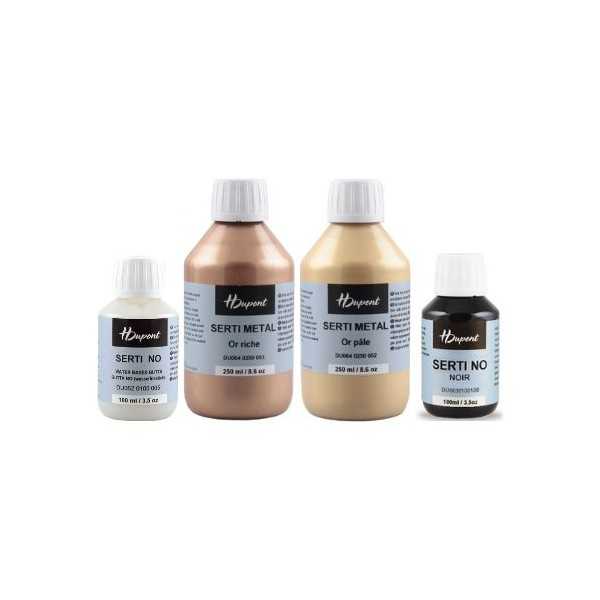1. Use of the glove
To be effective, the gauze must dry within a few minutes and blend completely into the silk. The line must be imperceptible to the touch and completely impermeable to the passage of colour.
To check the consistency of the glop, draw a line of product from the container. The glop should flow out of the applicator perfectly.
Depending on the thickness and quality of the silk, you will have to adjust the gutta application.
It is therefore necessary to carry out some tests on samples of the silk to be used.
For example, a coarse weave (twill, doupion) will be easier to impregnate than a pongee.
2. Tests
Start the test on a piece of paper.
Hold the bottle with an applicator (of various sizes) as if it were a pen, pressing it lightly. The pipette should move evenly, without jerking, to obtain a fine, uniform bead.
Make several attempts with simple shapes to master the pipette movement. There should be no oscillations or repetitions.
On thick fabrics, the stroke must be wider and the movement slower. More pressure should also be applied to the fabric.
It may be necessary to enlarge the hole with a tube and redraw with the gutta to ensure correct application.
Pay attention to the drop that forms at the beginning of each stroke.
To draw straight lines, you can use a ruler. Watch out for burrs.
3. Draw
Once you have stretched the silk, you can trace your design with a soft pencil or a fugitive marker. On that line you can start working with the gutta by applying it with your own applicator (in the case of the 25ml ubos) or by pouring the gutta into the applicator bottles with pipettes. Check the tightness of the gutta by looking through it and applying clear water if necessary once the gutta is completely dry. If any lines appear weak or broken, touch them up.
To dry the silk more quickly, you can use a hairdryer. Hold it 20 cm away from the silk.
6. Application of colours
Start by applying light colours. For small surfaces use traditional fibre brushes or foam brushes.
For larger surfaces, use soft brushes or foam brushes.
Always start in the centre of the design, then allow the colour to melt until it reaches the gout barrier.
Beware of excess colour (risk of stains, drips, etc.). Excess colour can be removed with a squeezed brush or sponge.
If the gutta is not "watertight", there is a risk of colour transfer from one design to another.
Remove stains with cotton wool soaked in pure alcohol (be careful with stains). Repair any gaps before returning to work.
Problems encountered
The gauze does not dry quickly (time > 10 minutes).
The cord is too thick or the glove is not sufficiently perforated.
The gauze remains sticky after fxing.
In this case, soak the silk well
to remove all the gauze with methylated spirits.
Remnants of dye must also be diluted.
It is preferable to do this before colouring.
WARNING, water-based glove cannot be removed.













